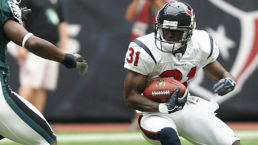The NFL has been suffering a popularity issue of late. 3 weeks into the season, the League implemented a new social media policy for its 32 teams.
Although the League slightly relaxed its rules after a backlash, it still prevents teams on game days from posting official game footage on social media, using live streams, gifs and sending too many snapchats from kickoff until an hour after the game. The policy hasn’t been well received by teams and fans alike, reflecting badly on the organisation and the sport as a whole. So what can other sports rights holders learn from the NFL’s fumble?
Understanding social media
Social media is your friend. It’s where your audience is so therefore a hugely effective way of growing your sport. Sports rights holders must recognise how quickly social media evolves and embrace the new trends that grow and engage audiences.
The NFL stated that it considers video to be “anything that moves.” This immediately stops teams from making the most of trends that could boost engagement with fans, engagement that feeds back into the popularity of the NFL and its sport.
Social media is made for sharing content, so finding that balance that retains your worth but shares the magic of your sport is crucial. We believe, in the long run, sharing more content will benefit a sport far more than restricting it.
Respecting your stakeholders
Sport doesn’t exist without players. Whether a sport involves teams or individual athletes, they both attract loyal fans that constantly want to engage. Instead of ignoring this desire, rights holders should be encouraging it.
The NFL is preventing its teams from providing content in the hope fans will turn to the League’s channels to access video and get their game-day fix. But due to the tribal nature of sports this strategy is a non-starter. Fans want content that means something to them, they want content that allows them to interact with their favourite team or athlete.
Sports rights holders need to recognise their stakeholders as free vehicles to engage fans with their sport and generate earned media value for their sponsors. Teams and athletes want to grow their own communities, and so will invest in their own channels and content. By leveraging their network, rights holders can engage more fans with more professional content. In many respects, they do this better than the rights holder and should be recognised as such.
Putting the fans first
In 2016, the NFL’s television viewership fell by double digits. Pushing back against social media will not remedy this. As we’ve discussed here, we think social media is going to be unstoppable in shaping sports broadcasting in the coming years.
In a bid to protect its own digital strategy and maximise monetisation, the NFL has placed a stranglehold on its stakeholders that starves its fans of content that would otherwise be available to them. Their policy is counterintuitive to the nature of social media, a force that can help grow their sport like nothing else. Rights holders must realise that by working with their stakeholders in this space, they can share their sport in a way that’s truly meaningful for their fans.





